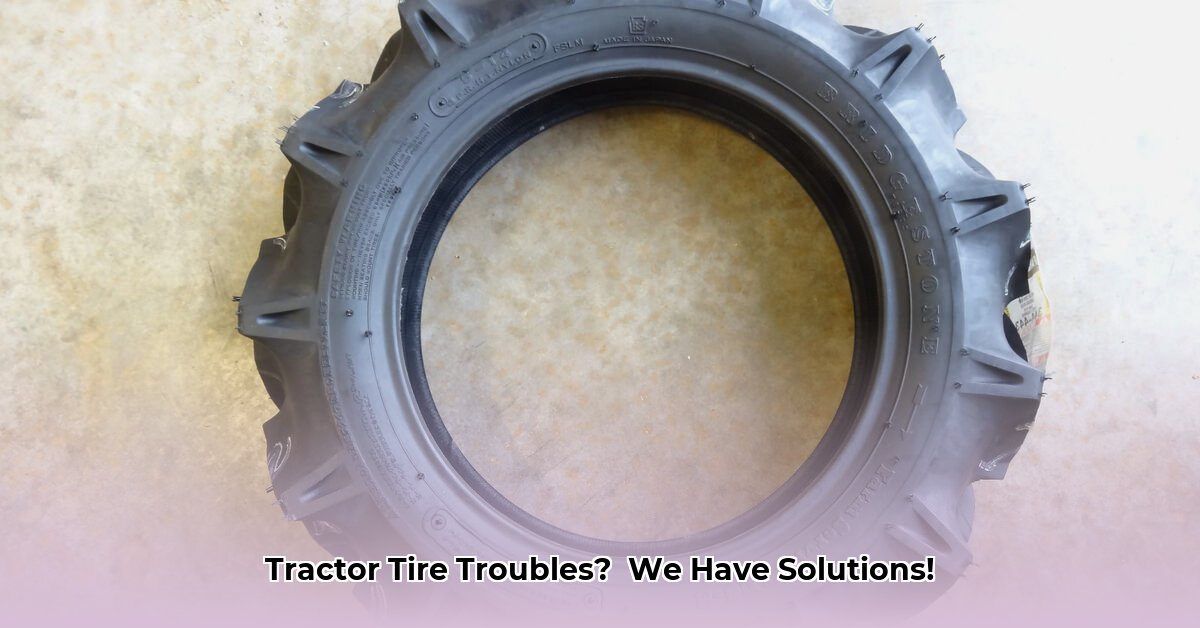
The Disappearing Act of the 5-14 Tractor Tire
Securing a new 5x14 tractor tire has become exceptionally challenging. Major manufacturers like Bridgestone have discontinued production, creating a significant problem for owners of tractors such as the Yanmar YM195D and YM1500. This isn't merely an inconvenience; it directly impacts farm operations and equipment longevity. The scarcity stems from the niche nature of this tire size, resulting in limited production. Furthermore, the requirement of inner tubes for many 5x14 tires adds to the sourcing difficulty. This situation mirrors the challenges of finding parts for vintage vehicles, demanding a more resourceful approach. California's Proposition 65, mandating warnings about chemicals in tire manufacturing and disposal, further complicates the process. For alternative sizes, check out this helpful resource.
Why Are 5-14 Tractor Tires So Hard to Find?
The primary reason for the scarcity of 5x14 tractor tires is simple: low demand. The limited market for this specific size makes it unprofitable for many manufacturers to continue production. This creates significant difficulties for farmers relying on older tractors equipped with these tires, potentially causing disruptions to their operations. The added complexity of inner tube requirements increases the challenge of finding suitable replacements. It's akin to searching for a specific part for a classic car—difficult, but achievable with the right approach. Moreover, the complexities of meeting California Proposition 65 regulations (requiring warnings about chemicals used in tire manufacturing and disposal) add another layer to the challenges faced by both suppliers and users.
Assessing the Risks: Challenges for Stakeholders
The acquisition of 5x14 tractor tires presents several potential risks. This matrix outlines these risks, their likelihood, impact, and recommended mitigation strategies.
| Risk Factor | Likelihood | Impact | Mitigation |
|---|---|---|---|
| Tire Unavailability | High | High | Explore all avenues: alternative suppliers, slightly different sizes (if feasible), used tires, online retailers. |
| Tube Quality Issues | Moderate | Moderate | Meticulously inspect tubes before installation; prioritize reputable brands. |
| Tire Performance (Traction) | Low | Moderate | Select tires from trusted sources; maintain correct tire pressure. |
| Proposition 65 Compliance | Low | Moderate | Understand and comply with the regulations; source from compliant suppliers. |
Actionable Steps: Solutions for Each Stakeholder Group
Addressing the 5x14 tire shortage requires a collaborative effort. Specific actions are needed from farmers, distributors, manufacturers, and recyclers.
For Farmers:
- Expand Your Search: Don't limit yourself to usual suppliers. Explore online retailers, smaller tire shops, and agricultural parts supply stores. Be prepared to compare prices extensively.
- Prolong Tire Life: Implement a rigorous tire maintenance schedule. Regular inflation checks, avoiding aggressive driving, and frequent inspections can considerably extend the life of your tires.
- Consider Alternatives (with caution): Consult a tire specialist or your tractor's manual. A slightly larger tire size may be compatible, but careful evaluation is crucial before making changes.
For Distributors:
- Strategic Networking: Connect with smaller tire manufacturers or importers who might be able to source 5x14 tires. Collaboration is key to establishing alternative supply chains.
- Diversify Inventory: Expand the range of tire sizes and brands to reduce the risk of stockouts. This balances supply and demand, especially in volatile markets.
- Optimize Inventory Management: Implement robust ordering systems and accurate demand forecasting to minimize shortages and waste.
For Manufacturers (of tractors):
- Redesign for Common Sizes: Develop future models using more readily available tire sizes. This long-term strategy prevents similar future shortages.
- Industry Collaboration: Partner with tire manufacturers to either revive production of 5x14 tires or develop suitable alternatives.
For Recyclers:
- Sustainable Disposal: Develop efficient and environmentally responsible recycling processes for 5x14 tires. Explore options such as tire-derived fuel.
- Recycling Innovation: Invest in research to improve tire recycling techniques, benefiting the entire industry and reducing environmental impact.
The Future of the 5-14 Tractor Tire and Beyond
The long-term outlook depends heavily on advancements in tire technology and manufacturing. The emergence of more durable and sustainable materials, as well as innovations in manufacturing processes, will significantly influence the availability and cost of tires. The current shortage illustrates the crucial need for adaptable and resilient supply chains within the agricultural sector. Addressing the 5x14 tire crisis highlights broader concerns about the sustainability and flexibility of our agricultural systems. Proactive planning and industry collaboration are essential to prevent similar challenges in the future.